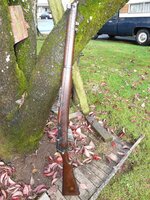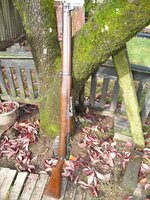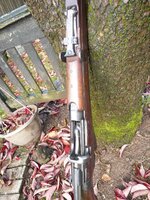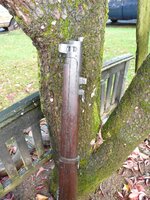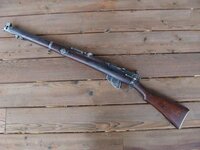I've had a couple of wants in the way of old military wood and steel. Another Swedish Mauser, either a full length or one that had been brought back in and arsenal drilled for diopter sights. An 03A3 BIG $$ I've discovered. Or an Endfield
Well, this was fresh at the OAC show today.
I don't know a lot about them, but the gentleman I've known for sometime is an honest good guy so when he said it was all matching and in real good shape for something like this that may have spent time in hell, I believed him. The bore looks really good!
I'll be taking in down and massaging the wood some to clean it up, (NO sand paper I promise). there's a scosh of rust on the front site ears. and some dings and dents. I'm not even sure what year it is at this point. Any info and/suggestions are appreciated.
Well, this was fresh at the OAC show today.
I don't know a lot about them, but the gentleman I've known for sometime is an honest good guy so when he said it was all matching and in real good shape for something like this that may have spent time in hell, I believed him. The bore looks really good!
I'll be taking in down and massaging the wood some to clean it up, (NO sand paper I promise). there's a scosh of rust on the front site ears. and some dings and dents. I'm not even sure what year it is at this point. Any info and/suggestions are appreciated.






